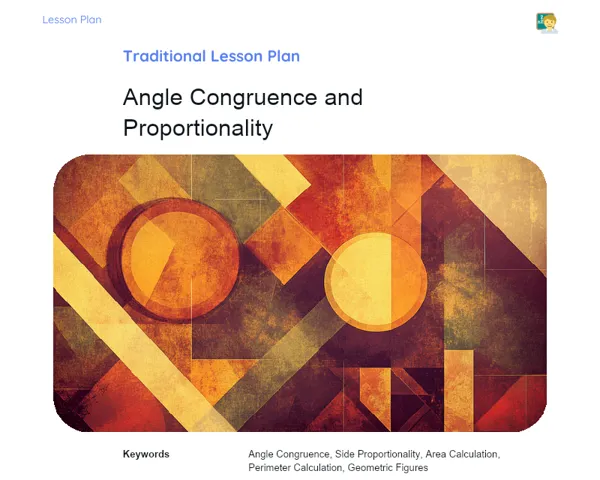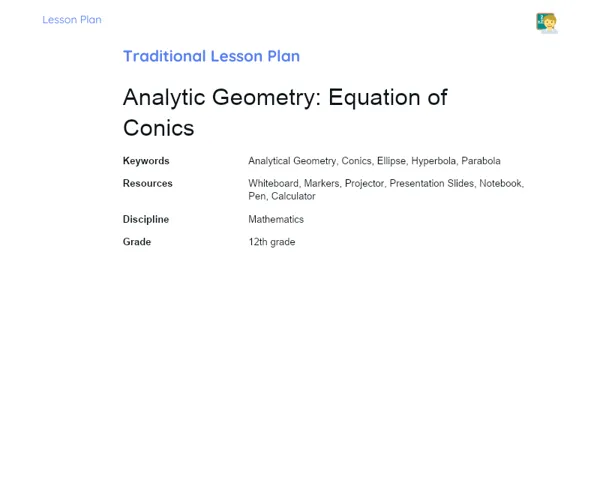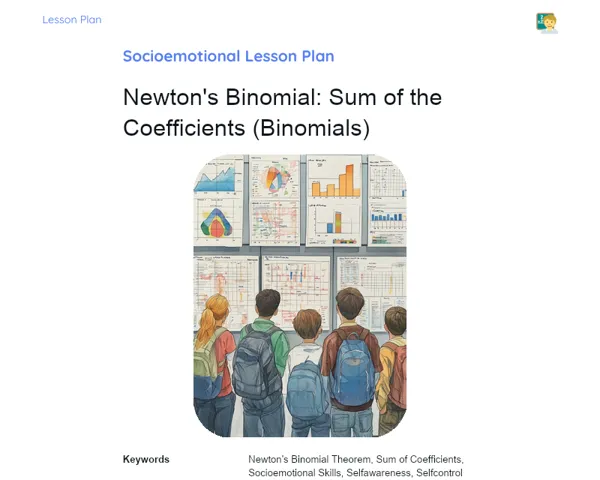Lesson Plan | Lesson Plan Tradisional | Equality: Identical Sums and Subtractions
| Keywords | Identical Sums, Identical Subtractions, Commutative Property, Non-Commutative Property, Guided Resolution, Practical Applications, Natural Numbers, Financial Planning, Programming, Optimizing Code, Family Budget |
| Resources | Blackboard or whiteboard, Markers or chalk, Notebooks for taking notes, Pencils, Erasers, Worksheets, Posters with examples of sums and subtractions, Calculators (optional) |
Objectives
Duration: 10 - 15 minutes
The purpose of this stage is to offer a clear overview of the lesson objectives, ensuring that both the teacher and students are on the same page regarding what will be learned. This lays a strong foundation for the lesson, guiding all subsequent activities and ensuring that time is effectively utilized to achieve the desired outcomes.
Objectives Utama:
1. Help students recognize and formulate addition sentences that yield the same result using different combinations of natural numbers.
2. Show how subtraction can be expressed in various ways to achieve the same outcome.
3. Encourage understanding that multiple pathways exist to arrive at the same sum or difference using natural numbers.
Introduction
Duration: 10 - 15 minutes
The aim of this stage is to provide an engaging introduction that captures the students' attention and highlights the relevance of the topic in their daily lives. By offering simple and stimulating examples, students will begin to get comfortable with the concept of identical sums and differences, paving the way for a richer learning experience in the parts of the lesson that follow.
Did you know?
Did you know that this skill of finding different ways to reach the same result is commonly used in computer programming and even in managing household budgets? For instance, a programmer might optimize code by finding several methods to write the same function more effectively. Or consider a family budgeting scenario: parents often save in various ways to achieve the same financial target!
Contextualization
To kick off the lesson, explain to the students that today they will explore how different combinations of numbers can lead to the same sum or difference. It's a bit like solving a puzzle; there are various pieces that can come together to create the same picture. Use a simple example, like the sum 3 + 5, and ask the students to come up with other combinations of numbers that give the same total, like 2 + 6 or 1 + 7. This will help lay an initial foundation and spark their curiosity in the topic.
Concepts
Duration: 35 - 40 minutes
The objective of this stage is to enhance students' understanding of identical sums and subtractions through in-depth examples and practical exercises. This section reinforces the concepts introduced earlier, allowing students to practice and apply their understanding in diverse contexts. Guided resolution and practical applications fortify knowledge and illustrate the topic's relevance in real-life scenarios.
Relevant Topics
1. Equality in Sums: Explain that different sets of numbers can give the same sum. For example, 3 + 5 equals 2 + 6. Emphasize that the order of the numbers in addition does not affect the result (commutative property).
2. Equality in Subtractions: Illustrate that different number combinations can also yield the same difference. For instance, 10 - 6 equals 11 - 7. Stress the significance of the order of numbers in subtraction, which changes the result, unlike in addition.
3. Mathematical Properties: Outline the relevant mathematical properties, such as how addition is commutative while subtraction is not. Explain how these properties assist in understanding identical sums and subtractions.
4. Guided Resolution: Work through detailed examples on the board, like 7 + 3 = 10 and 15 - 5 = 10. Invite the students to assist in finding other combinations that lead to the same value.
5. Practical Applications: Discuss how these skills can be valuable beyond the classroom, such as in addressing everyday issues and making financial decisions. Encourage students to share experiences where they have applied these skills.
To Reinforce Learning
1. Find two different combinations of numbers that result in the sum of 8.
2. Write two different subtractions that lead to a difference of 5.
3. Using the numbers 6, 2, 4, and 8, come up with two different sums that yield the same total.
Feedback
Duration: 15 - 20 minutes
The aim of this stage is to review and solidify students' understanding of identical sums and subtractions. A detailed discussion of the answers allows students to reflect on what they've learned, clear up any doubts, and engage actively in the learning process. The engagement questions help bridge the content with real-life experiences, fostering a deeper, more meaningful understanding.
Diskusi Concepts
1. 📝 Discussion of the Questions: 2. Find two different combinations of numbers that yield the sum of 8: 3. 3 + 5 = 8 4. 4 + 4 = 8 5. 6 + 2 = 8 6. 7 + 1 = 8 7. Explain to students that there are many ways to achieve the same result using different pairs of numbers. 8. Write two different subtractions that yield the difference of 5: 9. 10 - 5 = 5 10. 9 - 4 = 5 11. 8 - 3 = 5 12. 7 - 2 = 5 13. Highlight the fact that, unlike addition, the order of numbers is crucial in subtraction. 14. Using the numbers 6, 2, 4, and 8, write two different sums that yield the same total: 15. 6 + 2 = 8 16. 4 + 4 = 8 17. 2 + 6 = 8 18. Explain how the commutative property of addition allows for different combinations to achieve the same sum.
Engaging Students
1. ❓ Questions and Reflections to Engage Students: 2. What was the easiest combination of numbers for you to find? Why do you think it was easy? 3. Do you think it’s simpler to find different combinations for sums or subtractions? Share your thoughts. 4. How can you apply these skills in other areas of your life? Anyone have an example? 5. Did you notice any patterns while solving the questions? What were they? 6. Did anyone come across other combinations apart from those we discussed? Please share with the class.
Conclusion
Duration: 10 - 15 minutes
The objective of this stage is to review and reinforce the main concepts learned during the lesson, ensuring that students have a clear and comprehensive understanding of the topic. The conclusion also bridges theory with practice, showcasing the relevance of the learning in real-world contexts and promoting a deeper and more meaningful understanding.
Summary
['Different combinations of numbers can yield the same sum (e.g., 3 + 5 = 8).', 'The order of numbers in addition does not affect the result (commutative property).', 'Different combinations of numbers can lead to the same subtraction (e.g., 10 - 5 = 5).', 'The order of numbers in subtraction alters the result (non-commutative).', 'These properties have practical applications in everyday situations and problem-solving.']
Connection
The lesson linked theory with practice by showing how mathematical properties, like the commutativity of addition and the non-commutativity of subtraction, can be applied in real-world situations. Practical examples and guided exercises enabled students to recognize the usefulness of identical sums and subtractions in daily tasks and financial decision-making.
Theme Relevance
Understanding identical sums and subtractions is vital for everyday life as it aids in efficient problem-solving and informed decision-making. For instance, optimizing family budgets or finding various ways to reach a financial goal are practical skills that use this mathematical knowledge. Furthermore, this skill is key in fields like programming and engineering.



